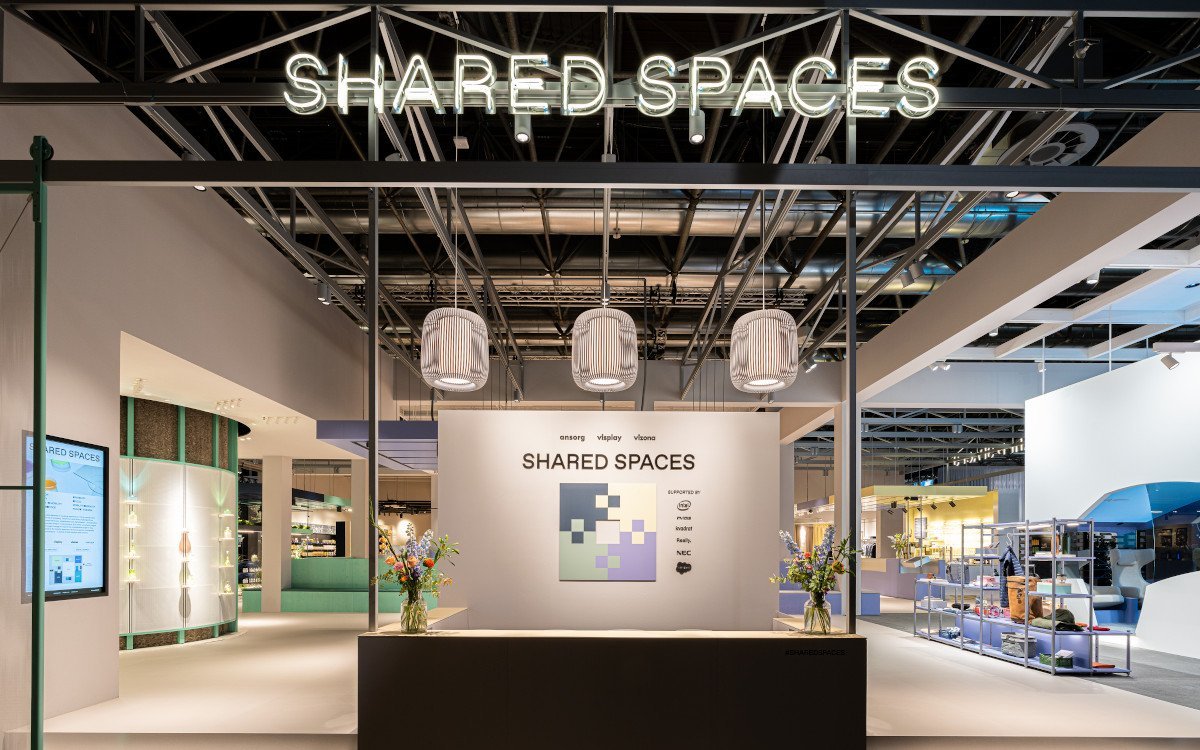At Euroshop 2020 you could experience them, Shared Spaces. A pioneering concept by Visplay, Vizona and Ansorg. Designed by Kemmler Kemmler. The digital concept was conceived by us, invidis consulting, and realized with the partners Salesforce, Intel and NEC. A team success, a matter of the heart – border crossing and trend-setting.
Have you ever wondered what would happen if you simply broke established rules in retail and explored new ways? If fashion was blended with mobility and food with beauty – or all together? What would happen if you could read your customers‘ wishes from their eyes or if you simply placed the fitting room right in the middle of the store? How a car dealer would do without cars or a modern store without digital? No, we are not talking about Alice in Wonderland, but about one of our most important projects in the last 12 months – Shared Spaces.
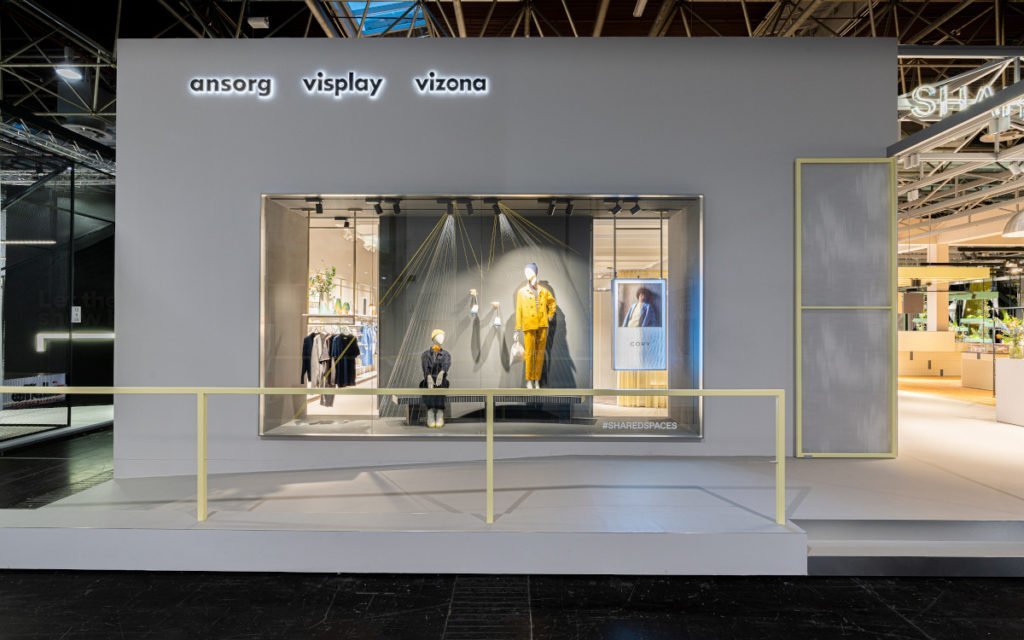
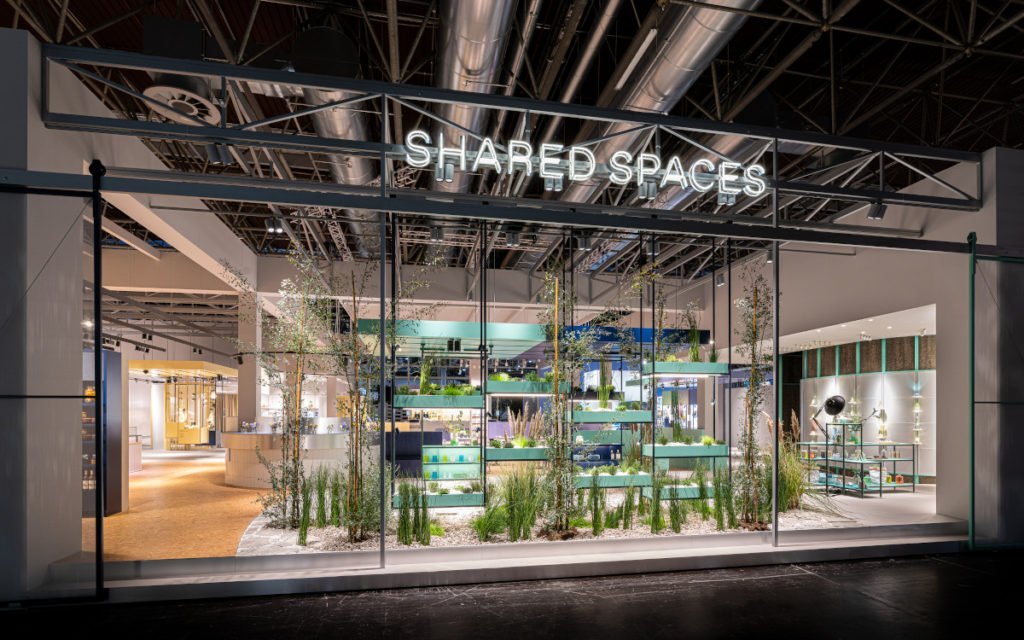
Shared Spaces is the name of the joint trade show presence of Visplay, Vizona and Ansorg – three sister companies for retail systems, shopfitting and lighting – at Euroshop 2020. The common goal, to which invidis also contributed: to push the concept of a modern shopping experience with the pillars fashion, mobility, beauty, and food to the next level. This is how the idea of „Shared Spaces“ was born.
The eponymous concept originates from traffic planning and was developed under the leadership of the Dutchman Hans Monderman. The principle behind it is a simple one: the deliberate omission of rules should lead to more communication and to a shared use of spaces. This planning principle is applied, for example, in light traffic areas such as residential streets, where it is supposed to lead to a better traffic flow.
The challenge of applying this concept to the retail sector was assigned to a team of architects, shop fitters, lighting designers and invidis as digital experts. In contrast to typical retail design projects, the aim was to connect the different expert silos with each other from the very beginning. Shared Spaces – also in this respect. What is new is about this concept is not primarily the modern technology used, but rather the combination of different elements – for example the combination of a soft surface material with a projected touch interaction or the combination of eye tracking AI and RFID as the key to a personalized customer experience.
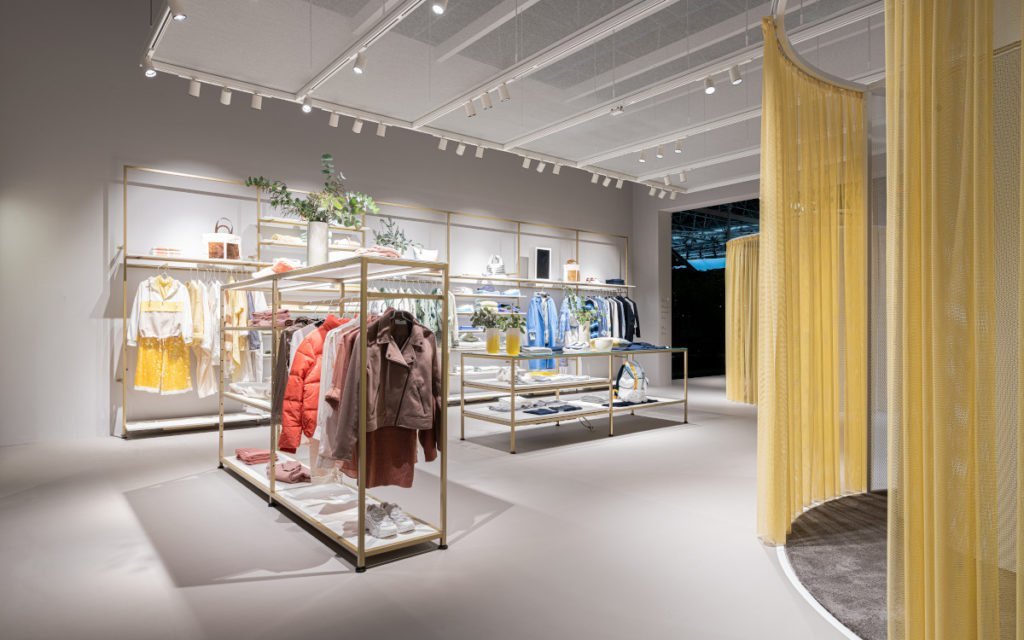
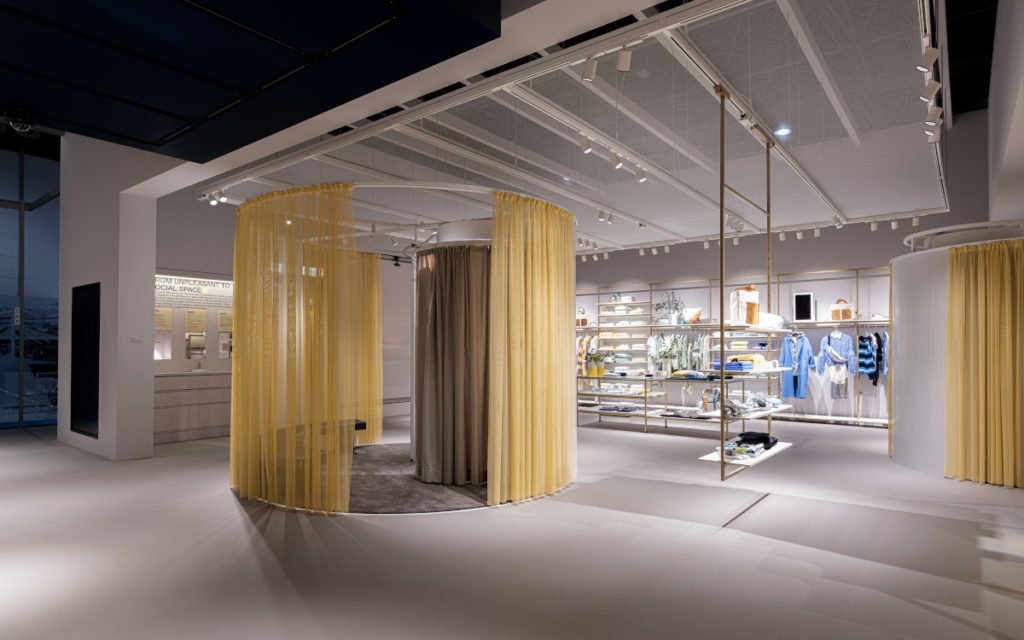
These complex combinations of people, space, material, light, sounds, smells, and digital elements are, in our view, at the very heart of the art of modern retail design. A rich palette of possibilities to address customers on every level. But unfortunately, also many opportunities to get it wrong. After all, this multitude of interaction levels is also the main difference to the purely digital world of online and mobile, where the focus is on a lit surface of n by m pixels. In the choice of partners, we also followed the principle of shared spaces. This way, companies such as Salesforce, Intel and NEC found their way from the Tech Hall to our stand next to the Designer Village. This allowed them to combine their tech showcases with a real use case. At the same time, it showed the way from a single digital touchpoint to an entire customer journey.
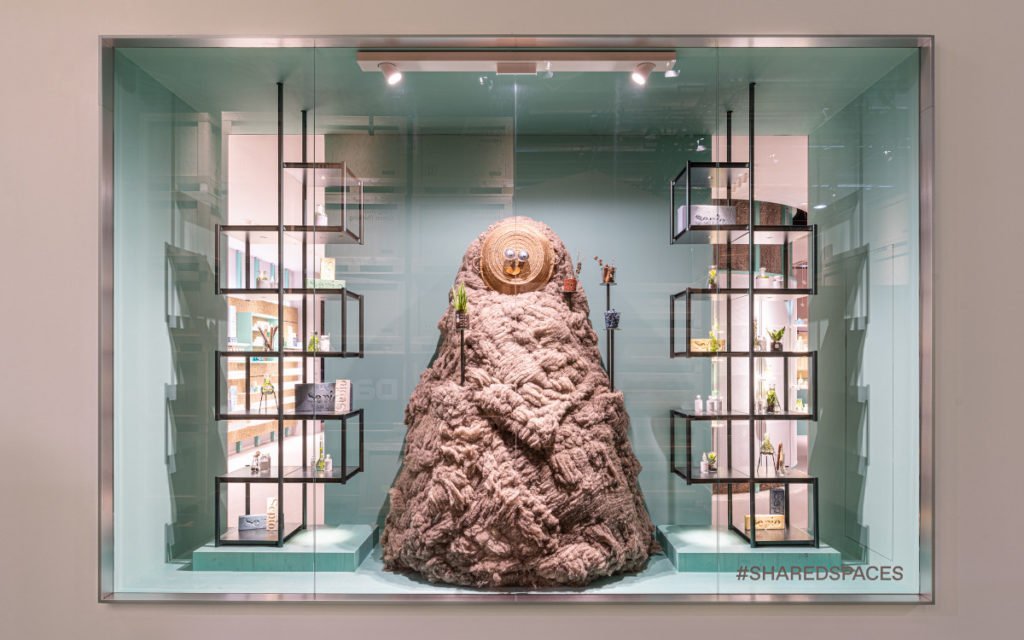
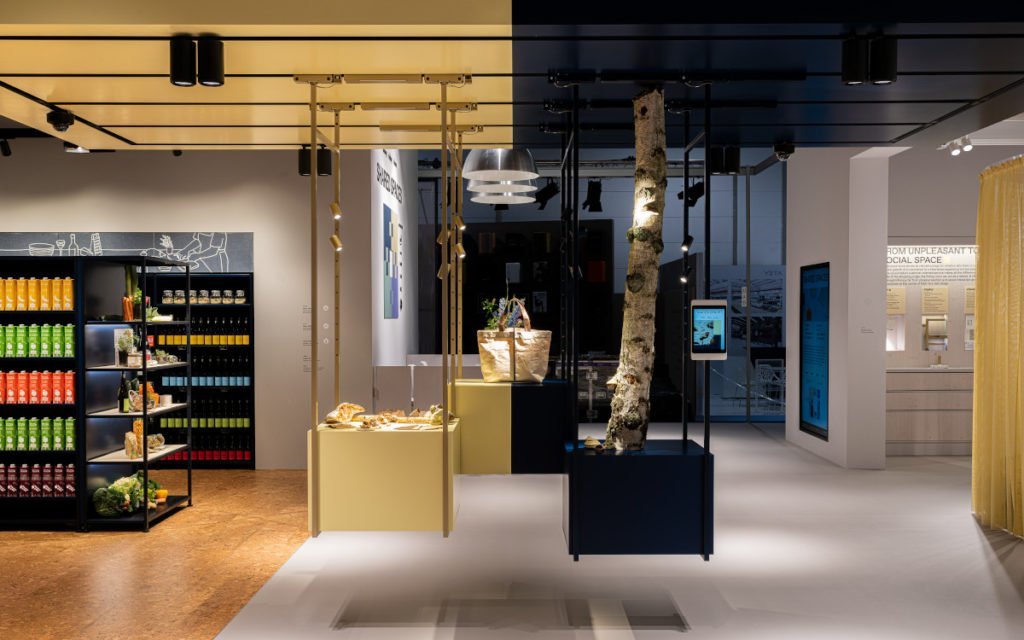
The customer gets a say in adaptive spaces
Our team was guided by two key questions: How do you combine online and offline into a shared space? And how do you make the spaces adapt to their users – just as online services like Google or Amazon have been doing already for a long time? From the customer’s perspective, online, mobile, and offline worlds have long ceased to be separate. It is natural to get out your mobile phone in a store to ask your friend for her opinion on your new shoes. Or to quickly check and compare prices for your new camera online. For retailers, the barriers are organizational silos as well as sepa-rate data worlds.
Today, it is easy for companies like Salesforce to create rich, anonymous user profiles. With the help of AI, tailored action guidelines are derived from them. Targeted marketing and perfect customer service on the device. However, the person in front of the screen remains unreachable in all her complexity. Only by combining the digital information with the empathy and observational skills of well-trained employees the type of shopping experience we all want as customers can be created.
But for this to happen, the assistance and approval of the customers is necessary and rightly so. For the right added value, customers are certainly willing to share their digital profile with the retailer – provided the latter is technically capable to use it. Customers are for sure happy to release their purchase history for tailored advice from an employee. When shopping in the supermarket, the retailer is certainly welcome to use the customer’s allergy and nutrition details to help the customer find suitable products more easily – instead of having to read every single label. In case of problems, the service team is surely allowed to have a look at the service history in order to help quickly and effectively. But are customers also willing to do this for tailored advertising?
Building the technical foundation, gaining customer acceptance, and engaging employees are the magic terms for creating a shared space be-tween online and offline.
The only remaining question is how to automatically adapt environments to their users – we call this „Adaptive Spaces“. Sensors and analytics play the central role here. The spectrum of possibilities is as large as the number of different sensors. For example, NEC ALP detects the attention paid to certain advertising messages and then optimizes the video loop. Visitors to the trade show could adapt the ambient lighting and some digital content to their own preferences using a simple cardboard token. But there is a fine line between „oh cool“ and „oh no“ for customers. Because every adaptation also requires some kind of anonymous observation.
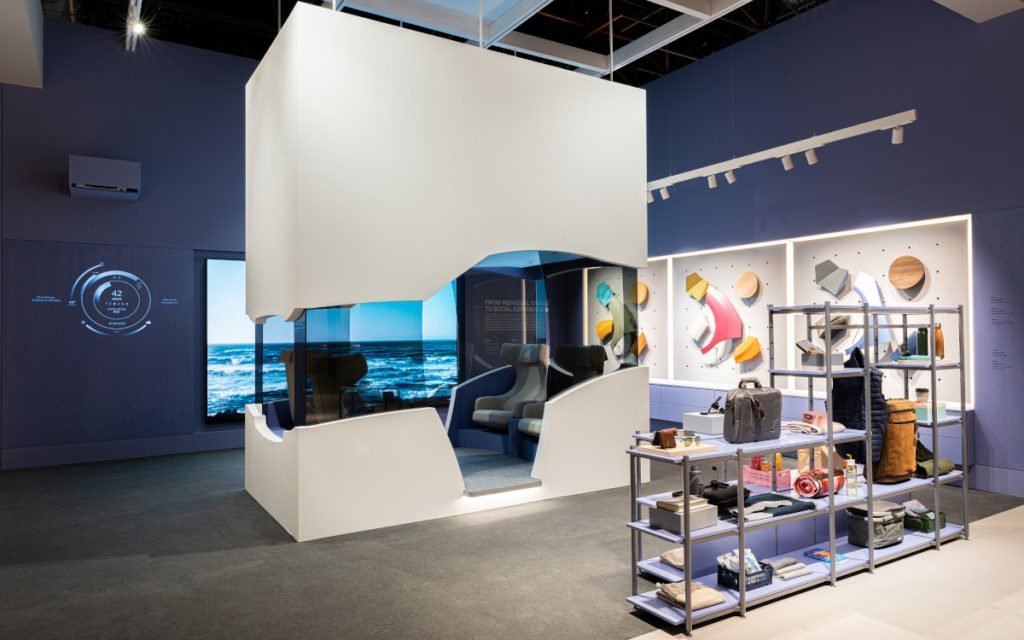
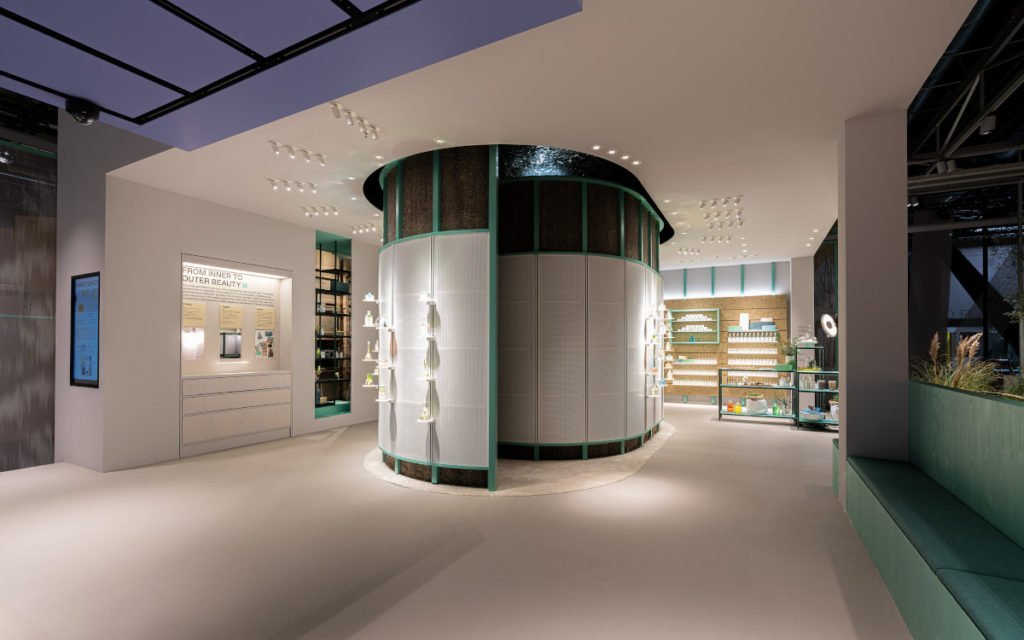
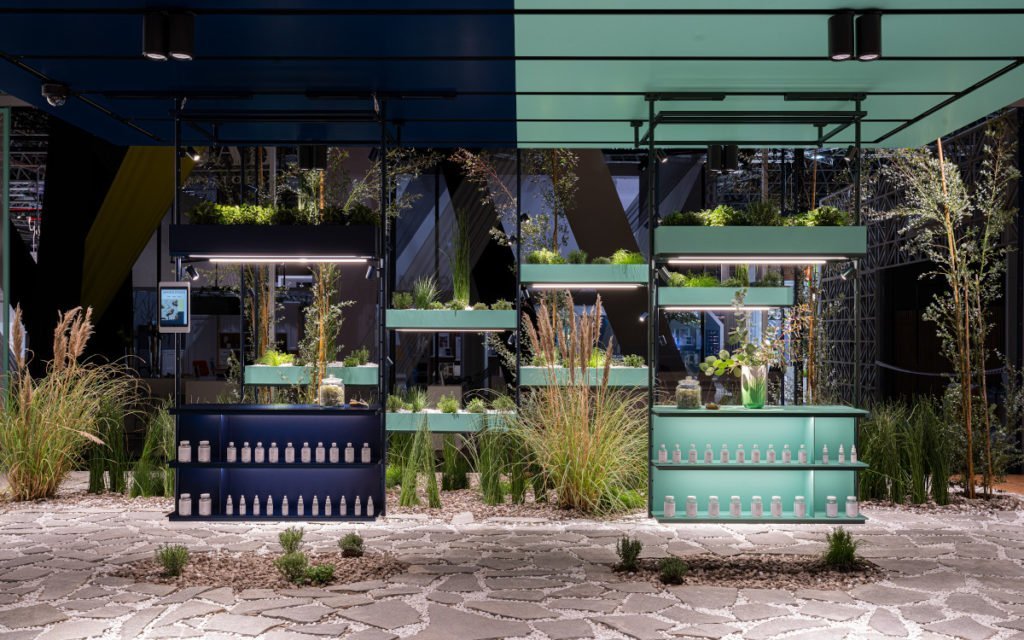
Last but not least, shared spaces need a high degree of flexibility. They thrive on permanent communication and constant change, or, in designer terms, a state of „permanent beta“. On the one hand, this is the great strength of digital. Content can be changed quickly and easily. Ever new stories can be told. On the other hand, digital hardware takes away a lot of flexibility in many projects. Cables are fixed, screens and sensors are screwed to walls and ceilings. For us, the Shared Spaces project was a great opportunity to explore the possibilities that come with breaking established rules and to look at things from very different angles. The process wasn’t always easy, but we enjoyed pushing boundaries. And we definitely look forward to developing entirely new Shared Spaces together with our clients.
Get full access to all invidis yearbook articles – it’s free!
Download the industry bible for more analysis and market data. Secure your personal copy now – it’s free of charge.

